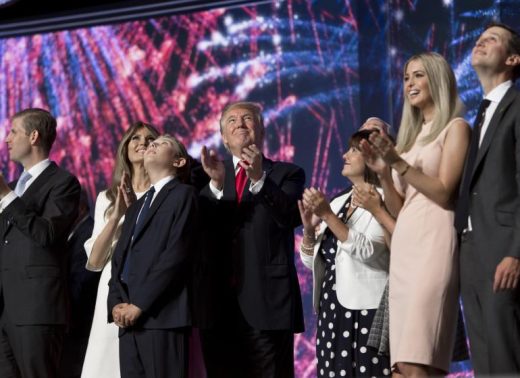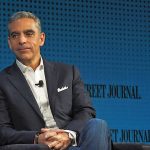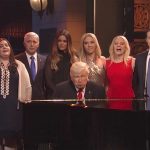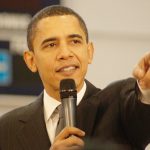Republican Convention Ends With Mixed Results for Donald Trump
Republican Convention Ends With Mixed Results for Donald Trump
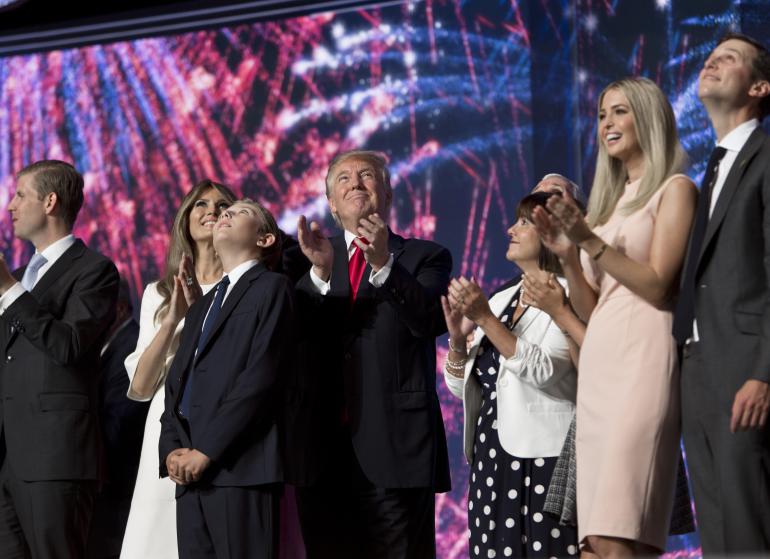
On the first day of the GOP convention, Trump campaign manager Paul Manafort briefed reporters on what he hoped to accomplish in Cleveland. “Our goal all week is to present a picture of Donald Trump that is broader than just the campaign image that people have developed through the primary season,” he said.
Trump’s high command wanted voters to walk away with a new understanding of the man when the cameras are off, and perhaps a newfound ability to imagine him behind the Resolute desk in the Oval Office. Conventions are one of the few opportunities candidates have to completely control the image they transmit to the American people. And for Trump, the most unpopular major party nominee in the history of polling, the need to change that image was critical.
But four days later, there remained an open question whether Trump’s campaign made any progress.
In 2012, Clint Eastwood’s conversation with a chair marred an otherwise well-executed convention. The 2016 edition was far more bizarre.
Donald Trump’s record-length address to the GOP convention capped a week of confounding turns, marked by a plagiarism scandal, technical problems with the video displays in the hall, gloom and doom rhetoric, and intra-party squabbles that masked the rosy image the campaign sought to display. At several points, the looming last stand of the Never Trump movement spotlighted the absence of the Republican Party unity.
The convention was orchestrated by Manafort, Trump’s convention manager before he was promoted to campaign chairman—and later de facto campaign manager. He is a longtime lobbyist and fixer who had been out of politics for years before signing onto the Trump campaign. Even before the convention was gaveled to order, Manafort was firing spitballs at the Republicans who chose not to attend, including swing-state Ohio Gov. John Kasich and the Bush family.
Trump’s campaign argued that it would be a “Trump convention,” and the line-up of speakers proved it. His four adult children and his wife spoke. But Melania Trump’s sentimental address was overshadowed by the revelation that she had cribbed from First Lady Michelle Obama’s 2008 Democratic Convention address. The Trump campaign, in typical form, refused to admit error for days, blaming the media and Hillary Clinton’s campaign as it flailed for an explanation. By Wednesday, they admitted it was a mistake, and it wasn’t until Thursday morning that Manafort offered a complete explanation for the episode, claiming he had been unaware that the offending aide to Melania was involved in the writing process.
Just as that controversy was lifting Texas Sen. Ted Cruz took the stage to make clear his decision not to endorse Trump. Boos filled the hall, followed by subsequent recriminations and insults thrown by both camps.
By the final night, Trump’s message began to break through, as billionaire friend Tom Barrack, strolling across the stage with a handheld microphone, delivered the equivalent of a best man’s speech about his longtime compatriot. Playfully teasing Trump and retelling stories of his success and evidence of his kindness, Barrack’s testimony was moving.
It was quickly reinforced by Trump’s daughter, Ivanka Trump, a celebrity and accomplished executive in her own right, whose praise for her father was calculated to rehabilitate his image among women. She promised her father would fight for equal pay legislation and paid family leave—policy areas where Trump has been less than clear. There were also videos narrated by Eric Trump and actor Jon Voight speaking to Trump’s business and personal biographies.
But the reliance solely on Barrack and family members to Trump’s private side was a missed opportunity. In 2012, Romney brought average people he helped through his business and church to speak in some of the most poignant moments of that convention. Instead, a group of wealthy friends and family spoke on his behalf.
On the final night, the convention hall filled for the first time all week. Trump’s first-person effort to redefine himself was a mixed bag. His winding address to the convention was the longest recorded, according to C-SPAN. Replete with predictions of doom and gloom, it including promises of change, but little sense of how he’d bring it about.
In a sign he was looking to adjust how he is perceived, Trump made seemingly prepared deviations from his released text designed to highlight his effort to pivot toward the general election. He “dropped-in” a thank you to the GOP audience for applauding efforts to protect LGBTQ Americans from ISIS and cut off a “Lock Her Up” chant about Hillary Clinton, saying simply he was out to defeat her in November.
His most poignant line, a riff off Hillary Clinton’s “I’m with Her” slogan, was delivered at nearly 11:30p.m. on the east coast. “So to every parent who dreams for their child, and every child who dreams for their future, I say these words to you tonight,” Trump said. “I’m with you, I will fight for you, and I will win for you.”
That was the message Trump had hoped to convey all week. It remains to be seen whether it made it through all the other noise.
(16)

